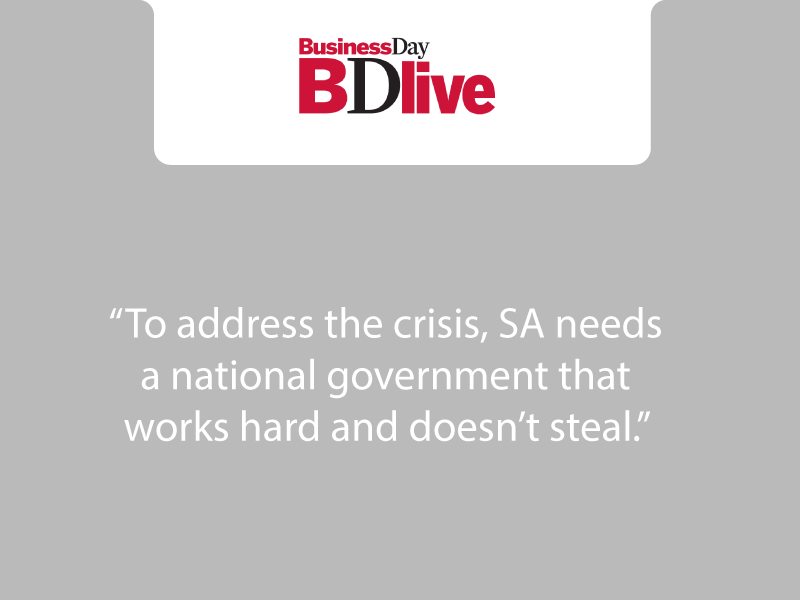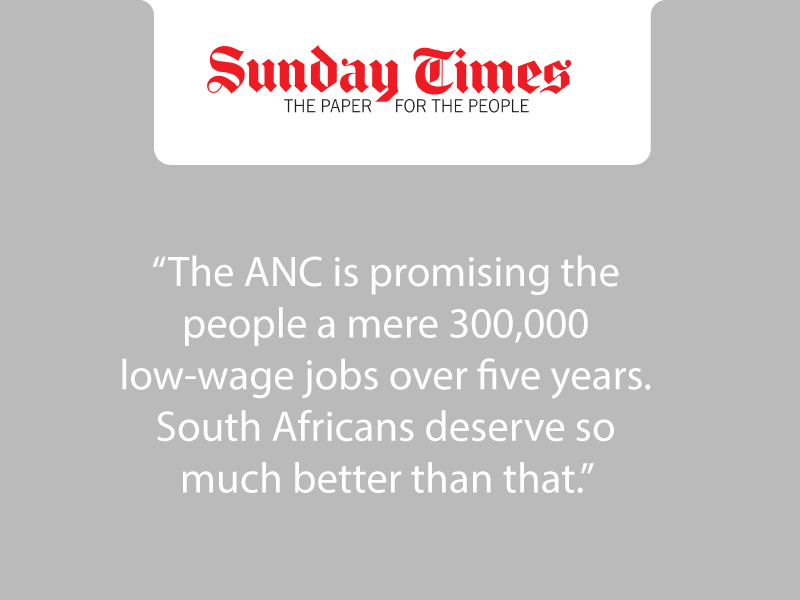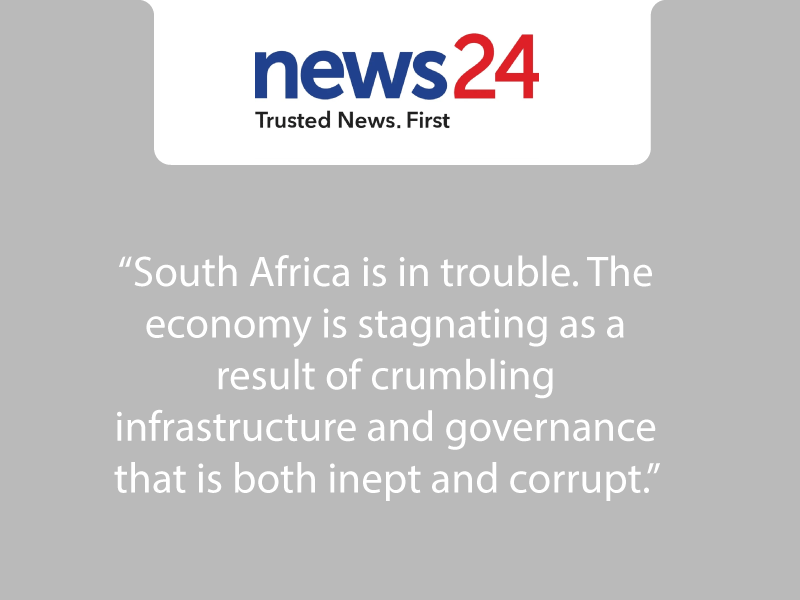 The emphasis must be on putting unskilled people to work, but the economy is doing just the opposite, writes Ann Bernstein.
The emphasis must be on putting unskilled people to work, but the economy is doing just the opposite, writes Ann Bernstein.
The World Bank’s new report on poverty and inequality in SA is important, and policy makers ignore it at their peril. Key finding: SA’s economic trajectory entrenches and reproduces poverty and inequality.
The report starts by rehearsing the well-known facts that SA has much more poverty and much deeper inequality than other middle-income countries but then goes further, presenting swathes of data that help trace the forces that make our society so unequal.
While poverty levels are lower than they were in the mid-1990s, all the progress was made before 2010, after which we regressed. Some 56% of South Africans were living on less than R1,000 a month in 2015. This is an improvement on the 67% recorded in 2006 but is worse than the 53% recorded in 2011.
The report shows that inequality has risen over the past decade, and, relatedly, unemployment rates are among the highest in the world. These shocking numbers understate the challenge we face. The authors estimate that while over 50% of the population is poor at any given time, fewer than a quarter of all South Africans can be thought of as being securely out of poverty. Fully 78% of all South Africans were poor for at least part of the time between 2008 and 2015.
Most movement into and out of poverty affects two groups of people identified in the report as the “transient poor” and the “vulnerable”, who together make up about 27% of the population. For the chronic poor (estimated at half of all South Africans), the odds of moving out of poverty for any length of time are vanishingly small.
These horror-show numbers are a direct result of the structure and performance of the economy and, critically, the labour market. Employment of someone in the household, while no guarantee against poverty, is the critical difference between those who are always poor, sometimes poor or never poor.
Using four waves of a household survey conducted between 2008 and 2016, the authors calculate that households in which people were permanently poor earned less than 40% of all their income from employment. In households that were transiently poor, by contrast, income from the labour market was substantially greater, at 80% of all income. It was access to income-generating employment that distinguished households that were poor all of the time and those that were poor only some of the time.
In reducing poverty, not all jobs are created equal. The more a job pays and the more permanently it is held, the more it will do to raise an individual (and her household) out of poverty. This truth renders all the more tragic the data showing just how poorly the economy has fared in creating the kinds of jobs for which the chronically poor are likely to be good fits.
Consider, in this regard, some key findings from the World Bank’s report. While 3.5-million people entered the labour market between 2008 and 2017, only 1.6-million jobs were created.
The effect of this underperformance was worsened by the fact that there were large increases in jobs in relatively skill-and qualification-intensive areas like services, but also large falls in the number of jobs in sectors that employ people with fewer skills: agriculture, manufacturing and mining.
Every sector experienced faster growth in the employment of skilled workers than in the employment of unskilled workers. There was a simultaneous fall in employment in small and medium firms, which, compared with bigger business, tend to employ fewer skilled workers and are more likely to employ people straight out of the unemployment queue.
SA has been better at generating jobs for skilled people than for unskilled. Unfortunately, we are not very effective at creating skills. This has led to a scarcity of skills and, therefore, to skilled workers enjoying high wages. In fact, wages for skilled workers have also risen more quickly than those of other workers.
This is great news for workers with skills. It is, however, a disaster for the tens of millions without. As a result, our economic trajectory entrenches and reproduces high levels of inequality and high levels of poverty.
The report estimates that because the jobs created in high-skill sectors do not draw unskilled people into employment, their impact on poverty, while real, is smaller than the impact of creating jobs in unskilled sectors, especially mining (where wages for unskilled workers are high) and agriculture (where wages are low but the potential workforce is among the poorest in the country).
It is, ultimately, for this reason that the report concludes that employment levels and wage trends will determine how quickly SA will reduce poverty and inequality. Current trends suggest that SA is unlikely to be able to generate much more rapid skills acquisition across the workforce and this makes it difficult to envisage a rapid decline in poverty and inequality.
What about the national minimum wage (NMW)? Will that lead to higher wages and, therefore, less poverty? Yes. But only up to a point. The report estimates that because some of those who earn less than the NMW are not poor, even if compliance with the NMW was complete and its imposition had no impact on total employment levels at all (an extremely optimistic assumption), it would reduce poverty by no more than 4%.
If, on the other hand, the imposition of the NMW does reduce the level of demand for unskilled workers, that impact would fall. If, for example, every 1% rise in wages reduces demand for labour by 0.5%, then the imposition of the NMW will reduce poverty by no more than 2%.
This estimate is interesting. A 2% reduction in poverty is almost identical to the impact the report’s authors calculate would be felt by a 2% increase in per capita GDP. Thus, improving SA’s rate of growth by just one percentage point a year for two years would have the same impact on poverty as the NMW will ever have. Importantly, it will do so without reducing employment.
SA faces many challenges, and the World Bank’s report offers no easy solutions. Nor should we expect them. Creating a society as poor and unequal as we are was not the work of a day, and it will take long years to overcome. What it does show, however, is that by far the most critical priority is economic growth and the labour intensity of that growth.
This is something we all already know, of course. Achieving it must become the central goal of all our leaders.
Bernstein is head of the Centre for Development and Enterprise




